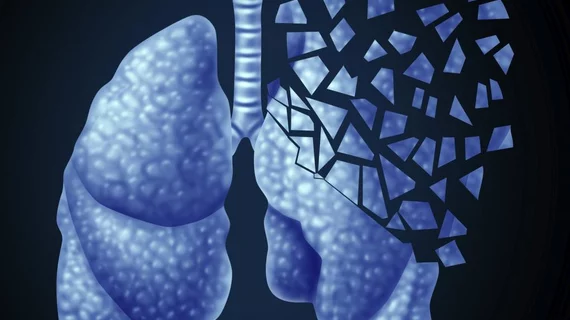Vancouver risk calculator found to improve lung cancer screening
The Vancouver risk calculator (VRC) offers superior guidance in predicting the risk of malignancy in patients receiving CT lung cancer screening compared to the American College of Radiology Lung Imaging Reporting and Data System (Lung-RADS), according to a new study.
Authors of the research, published Jan. 22 in Radiology, did report the Vancouver method was less specific and less accurate when it came to subsolid nodules.
In the study, researchers scored more than 4,400 nodules taken from 2,813 patients as part of the National Lung Screening Trial (NLST). The nodules were scored using VRC with nine parameters and Lung-RADS. Of the total, 4,078 nodules were solid, 330 were subsolid.
On a per-nodule basis, VRC achieved a sensitivity, specificity and accuracy of 93 percent, 90 percent and 90 percent, respectively. Lung-RADS scored an 87 percent, 83 percent and 83 percent, respectively.
The numbers were slightly lower on a per-patient level, as VRC achieved a sensitivity of 93 percent, specificity of 85 percent and accuracy of 85 percent. Lung-RADS notched 87 percent sensitivity, 76 percent specificity and 76 percent accuracy rate.
While the higher accuracy and trend toward better sensitivity may prompt some to believe VRC should replace Lung-RADS, first author, Charles S. White, MD, with the University of Maryland in Baltimore, and colleagues say, not so fast.
“Rather than replacement, the roles of the VRC most likely include providing a second and complementary method to assess the likelihood of nodule malignancy during CT screening and in the longer term to contribute to future revisions of Lung-RADS by suggesting additional parameters from the VRC that might be incorporated into Lung-RADS to improve its predictive power,” White et al. added.
Corresponding editorialist William C. Black, MD, of Dartmouth-Hitchcock Medical Center in Lebanon, New Hampshire described the findings as “important, but not surprising” because the VRC was created to quantify the probability of malignancy in pulmonary nodules at baseline screening, while Lung-RADS was developed to standardize reporting and management, with malignancy calculation a secondary consideration.
Black did agree with the authors on two occasions. For one, he believed it “premature” to consider promoting VRC to replace Lung-RADS due to its widespread use in both the clinical and policy spheres.
Additionally, he supported the notion that VRC should be used alongside Lung-RADS to improve the risk-calculation of malignancy in solid nodules.
“Although it is premature to consider replacing Lung-RADS with the VRC, the latter could be used to supplement reporting, especially for subcentimeter solid nodules,” he concluded. “Probably much more could also be gleaned from the semiautomated volumetric approach used in the NELSON trial to inform the reporting and management of CT lung cancer screening in the future.”

